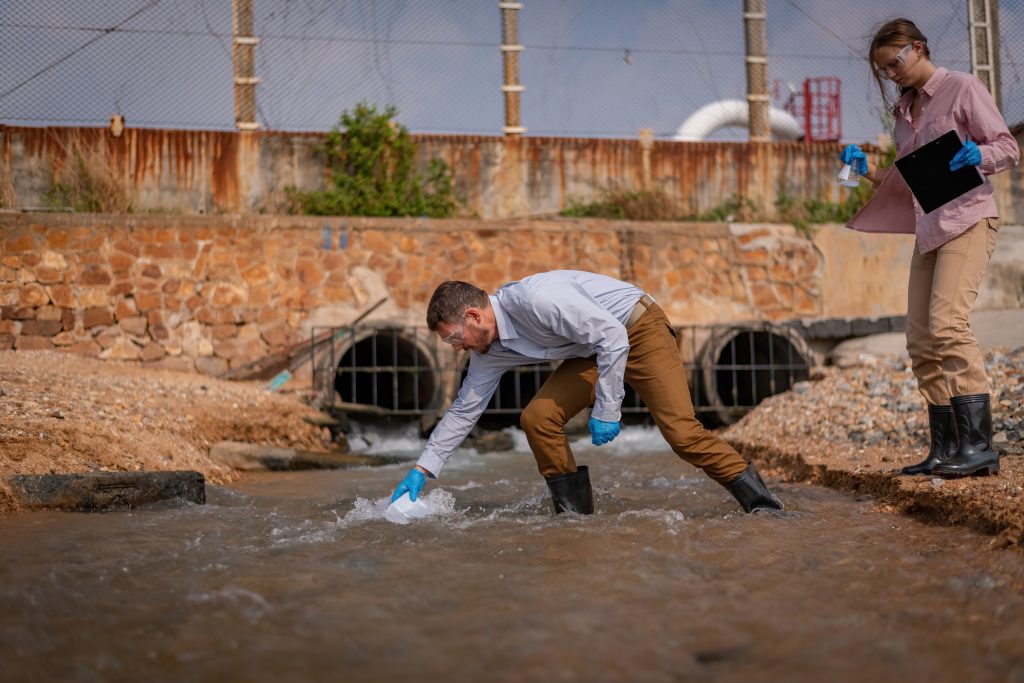When stormwater drainage systems are neglected or improperly designed, the consequences can be catastrophic—and expensive. For both commercial and residential areas, the failure to manage stormwater runoff correctly can lead to structural damage, road closures, overwhelmed sewer systems, and even threats to the water supply.
These aren’t rare occurrences. They’re preventable failures tied directly to how we handle the movement of large volumes of water during a short period—especially in areas dominated by impervious surfaces like parking lots, sidewalks, and rooftops.
The Storm Drainage Chain Reaction
Stormwater moves quickly. When rain hits impervious surfaces, it doesn’t soak in—it flows fast, and it needs somewhere to go. Storm drains, culverts, detention systems, and drain grates all play a role in channeling and controlling this runoff. But when even one element is blocked, undersized, or outdated, the entire system falters.
Take the storm drain cover—a small but essential part of the network. When it’s clogged by debris, stormwater can back up at the inlet, causing surface flooding and overwhelming connected pipes and sewer systems. Over time, repeated overflows can degrade infrastructure and lead to the collapse of streets and embankments.
Culverts and Trash Racks: Small Devices, Big Impact
Culverts are vital for directing water beneath roads and trails. However, they can become traps for branches, litter, or sediment. That’s where a trash rack—or more specifically, a culvert trash rack—comes in. These grates, often made from galvanized steel, act as a filtration barrier, preventing blockages inside the culvert while still allowing water to pass.
Neglecting to install or maintain trash racks increases the chance of culvert failure, road washouts, and downstream erosion. The fix is simple but often overlooked: regular inspections and correctly sized equipment based on expected volumes of water.
Understanding the Difference: Detention vs. Retention
Much confusion (and system failure) comes from misunderstanding the roles of detention tanks and retention tanks. A stormwater detention tank is designed to temporarily hold runoff and slowly release it over a period of time—usually hours—back into the stormwater drainage or sewer systems. Its purpose? To prevent flooding downstream during peak rainfall events.
On the other hand, a retention tank holds water permanently, allowing it to infiltrate into the ground or be reused. Both systems are critical, but using one in place of the other—or misunderstanding detention tank vs retention tank functionality—can overload infrastructure or cause environmental issues.
Stormwater Management Is Proactive, Not Reactive
Effective stormwater management isn’t just about responding to floods after they happen. It’s about managing stormwater before it becomes a hazard. This includes choosing the right detention system, installing secure drain covers, sizing culverts appropriately, and understanding the site-specific needs of commercial and residential developments.
Neglecting stormwater planning can put lives and property at risk, and it places avoidable strain on the entire system.
Prevent the Next Failure
Whether you’re planning new development or maintaining aging infrastructure, the goal is the same: protect people, property, and systems by controlling how water moves. That starts with understanding every component—from the humble drain grate to the full stormwater detention tank system—and ensuring each is in place, in shape, and doing its job.
When storms come—and they always will—your infrastructure should be ready.

